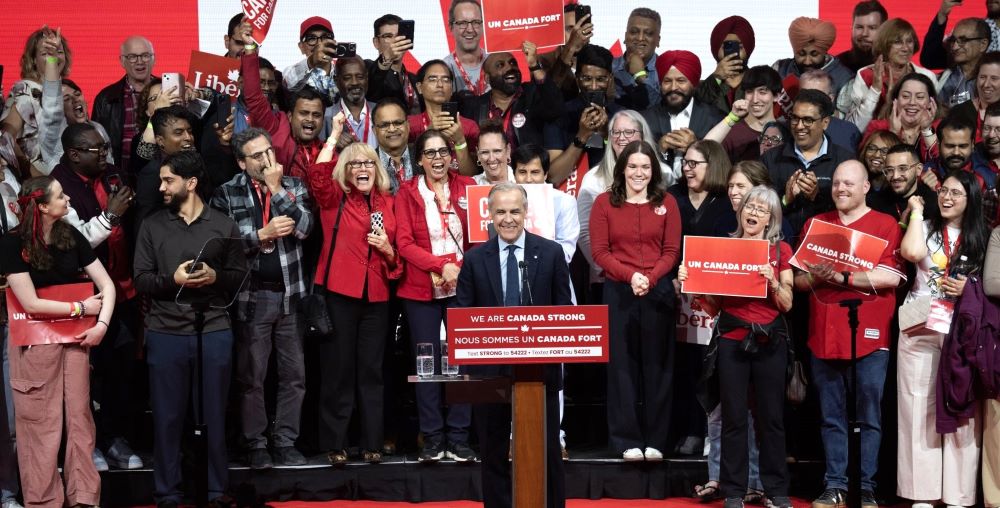Canada 2025 Federal Election: Mark Carney Leads Liberals to Surprising Minority Victory
By Sanjay Pahwa | Editor-in-Chief, The Voice of Canada
In a stunning political rebound, the Liberal Party under Mark Carney has returned to power in Canada’s 2025 federal election, winning 168 seats and forming a minority government, despite facing a steep uphill battle earlier this year.
Voter sentiment shifted dramatically in the final months leading up to the election, largely driven by widespread criticism of U.S. President Donald Trump’s economic threats, including punitive tariffs and inflammatory comments about turning Canada into the “51st state.” These developments galvanized support for the Liberals, who had been struggling in the polls.
The Conservatives, headed by Pierre Poilievre, finished with 144 seats—a respectable total, but not enough to seize power. In a major upset, Poilievre is projected to have lost his own seat in Carleton, Ontario to Liberal candidate Bruce Fanjoy, a symbolic defeat that reflects the party’s broader setbacks.
From Trudeau’s Exit to Carney’s Emergence
At the start of 2025, the Liberals trailed the Conservatives by nearly 20 percentage points. The political landscape began to shift following the resignation of Justin Trudeau, who stepped down after nearly ten years in office. His departure cleared the way for Mark Carney, a respected figure in global finance and former governor of both the Bank of Canada and the Bank of England, to assume party leadership.
Carney’s calm leadership style and economic credentials quickly redefined the Liberal campaign, especially as trade tensions with the United States escalated.
“It was a convergence of factors—the Trudeau exit, opposition to Trump’s economic aggression, and a strong pushback against Conservative policies—that brought many centrist and progressive voters back into the Liberal fold,” said Shachi Kurl, President of the Angus Reid Institute.
Redefining Canada’s Role on the World Stage
In his victory address in Ottawa, Carney struck a serious tone as he acknowledged a shift in Canada’s traditional partnership with its southern neighbor.
“The era of deepening economic ties with the United States is behind us,” he said.
“The global trade framework that Canada has depended on—anchored by American leadership—is breaking down. We must now chart a new course to ensure economic security and national sovereignty.”
Minority Government: Challenges on the Horizon
Though victorious, the Liberals fell just shy of the 172-seat majority threshold in the 343-seat House of Commons, leaving Carney’s government on uncertain footing. Minority administrations in Canada are typically short-lived, often lasting less than three years.
To maintain stability, the Liberals will likely need to form parliamentary agreements with smaller parties, particularly the New Democratic Party (NDP) and the Green Party, whose combined support could help push key legislation through Parliament.
However, analysts warn the situation remains precarious.
“It’s a fragile setup,” noted Philippe Lagassé, a constitutional scholar at Carleton University.
“Confidence votes will be high-stakes affairs, and even minor changes in seat distribution—like a single by-election—could tip the balance of power.”
Voter Priorities and a New National Direction
The outcome of the 2025 election signals a shift in Canadian public priorities. Voters appear to have favored steady leadership in uncertain times, particularly in light of growing international pressures and a weakening global trade environment.
With a renewed, though limited, mandate, the Liberals must now govern with careful collaboration and a renewed focus on defending Canada’s economic interests, identity, and independence on the world stage.







